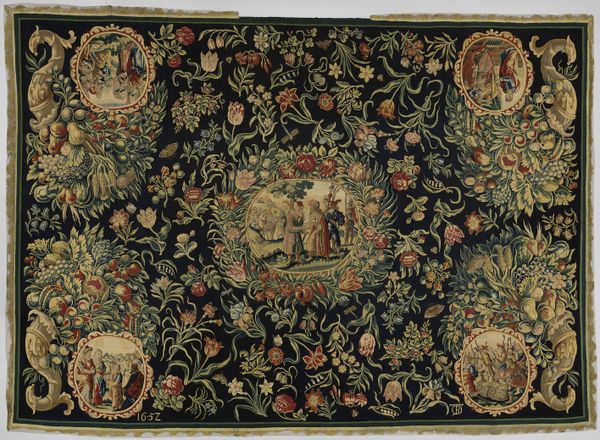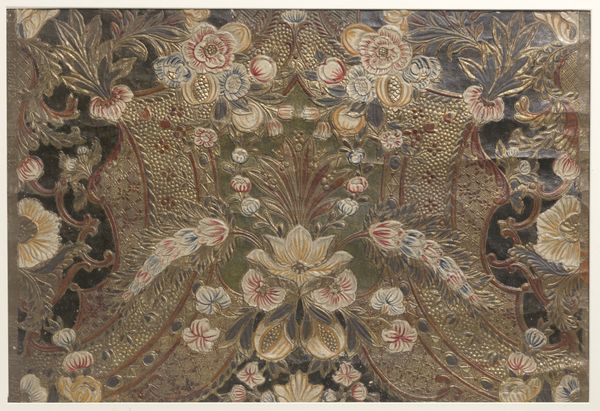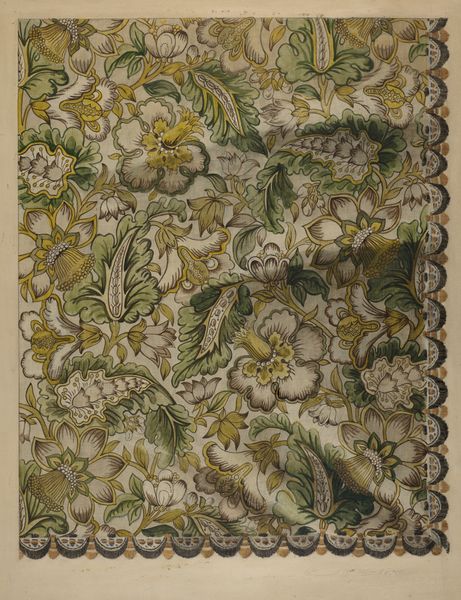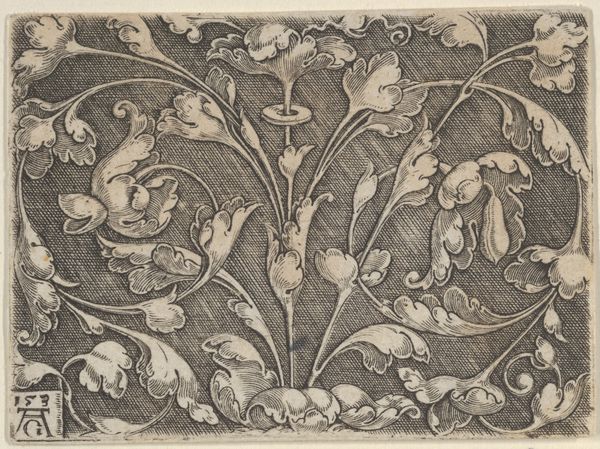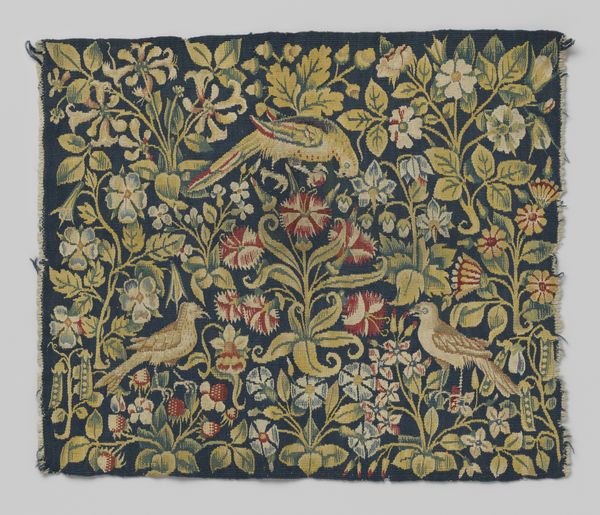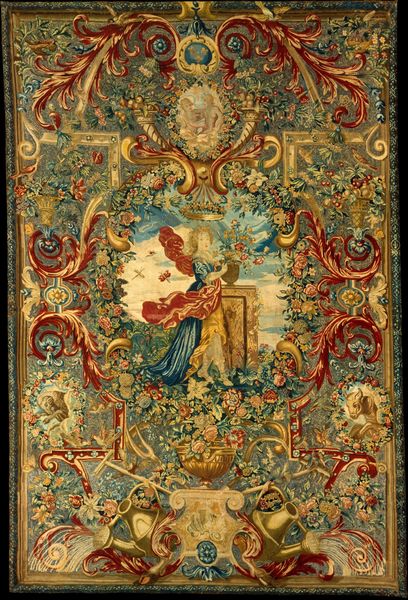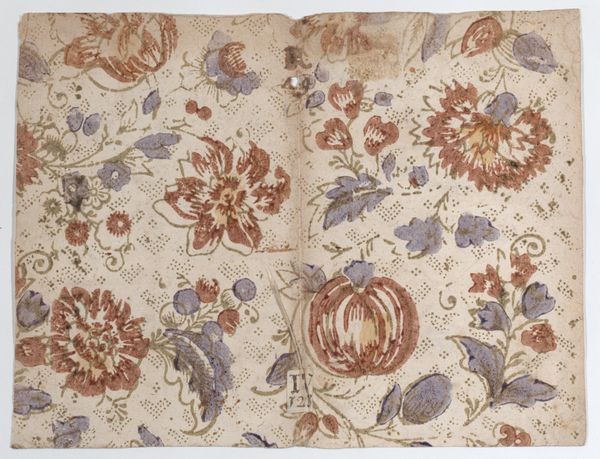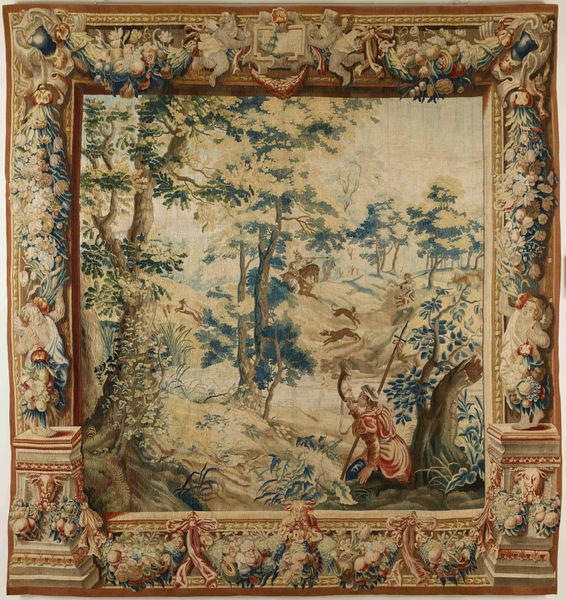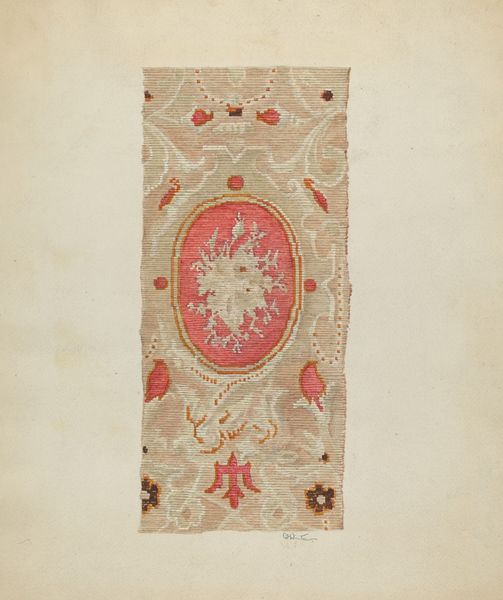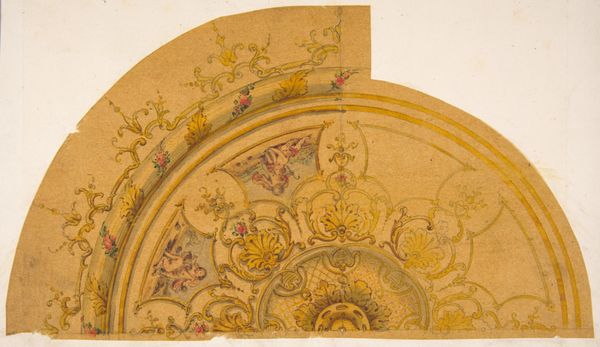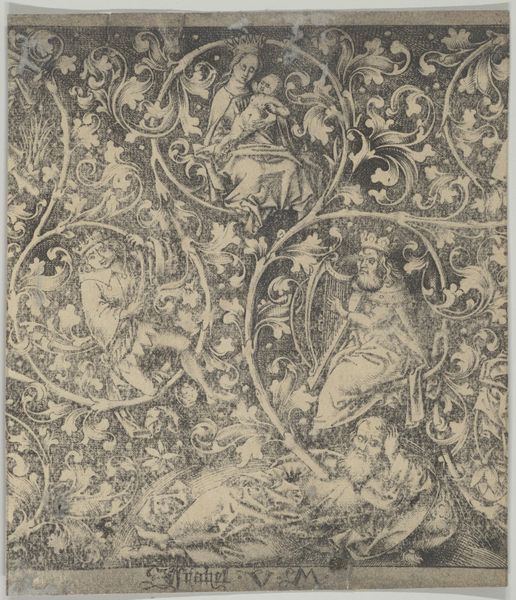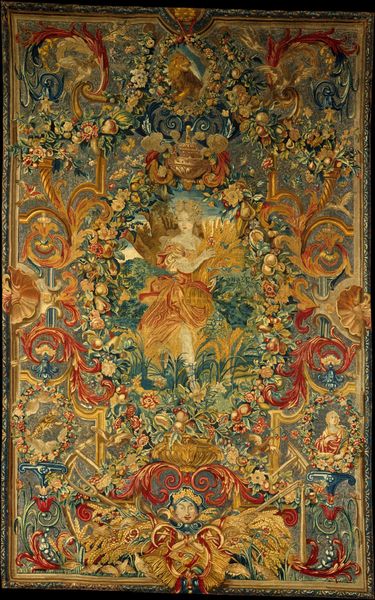
weaving, textile, pendant
#
baroque
#
weaving
#
landscape
#
textile
#
flower
#
oil painting
#
pendant
Dimensions: height 191.5 cm, width 268.0 cm
Copyright: Rijks Museum: Open Domain
Editor: This is a wool table cover woven sometime between 1650 and 1675, probably in the Netherlands. The detail is really incredible, all those tiny flowers on the dark background! The central scene feels very romantic and classically inspired. What strikes you most about this piece? Curator: It's a fascinating object precisely because of that tension between the high-style central image and its function. Textile production, even at this level of artistry, was largely outside the control of guilds that dominated artistic practice. Its existence reveals how elite patronage played out in both the artistic and artisan spheres. Editor: So, the existence of the table cover challenges our notion about who got to create art and how? Curator: Exactly! And who was even considered an artist. The composition mimics painted landscapes of the period. We see the idealised reclining figure reminiscent of classical portrayals of leisure and beauty. But its creation likely happened in a workshop removed from those elite circles, democratizing a type of representation often reserved for oil on canvas. Who saw this and what was their position in the household and in society? The textile complicates existing artistic hierarchies. Editor: So, by placing such high art imagery in a domestic object like a table cover, it shifts the conversation and the meaning to the domestic space and everyday life? Curator: Precisely. Also, consider that a table cover, while valuable, is subject to daily use, spillage, and wear-and-tear. How does that contrast with the intention of idealized scenes typically found hanging on walls in gilded frames, or the way that the artist wants the world to think of them? Editor: That gives me a lot to consider, particularly around the relationship between the location and purpose of art. I’d not considered its placement and social function to be critical to its importance. Thank you! Curator: My pleasure. These types of works reveal how class, consumption, and artistic ambition were tangled in the early modern period.
Comments
rijksmuseum about 2 years ago
⋮
Table covers with floral patterns were a speciality of several Dutch tapestry workshops. Maximiliaan van der Gucht’s workshop in Delft was after 1650 the most important in the northern Netherlands. The figure in the central medallion is Flora, the Roman goddess of spring and flowers.
Join the conversation
Join millions of artists and users on Artera today and experience the ultimate creative platform.
